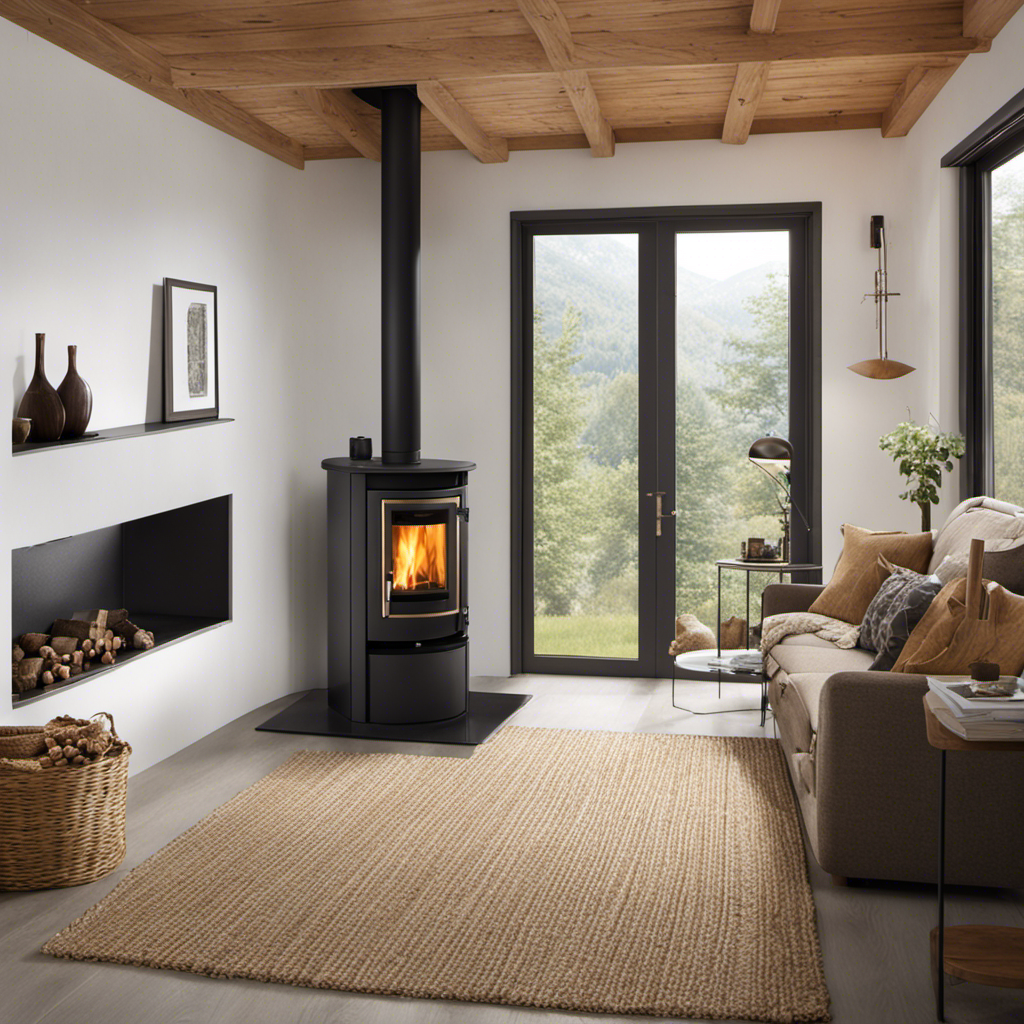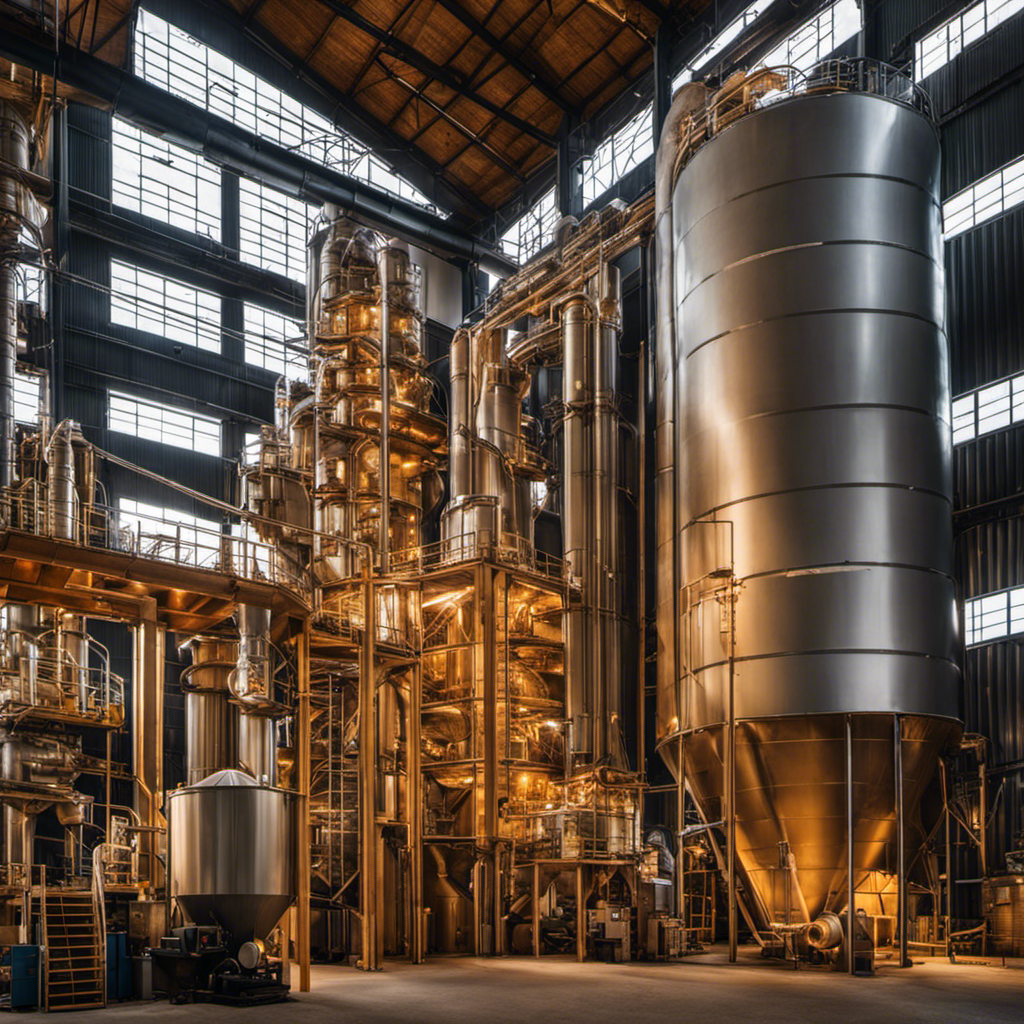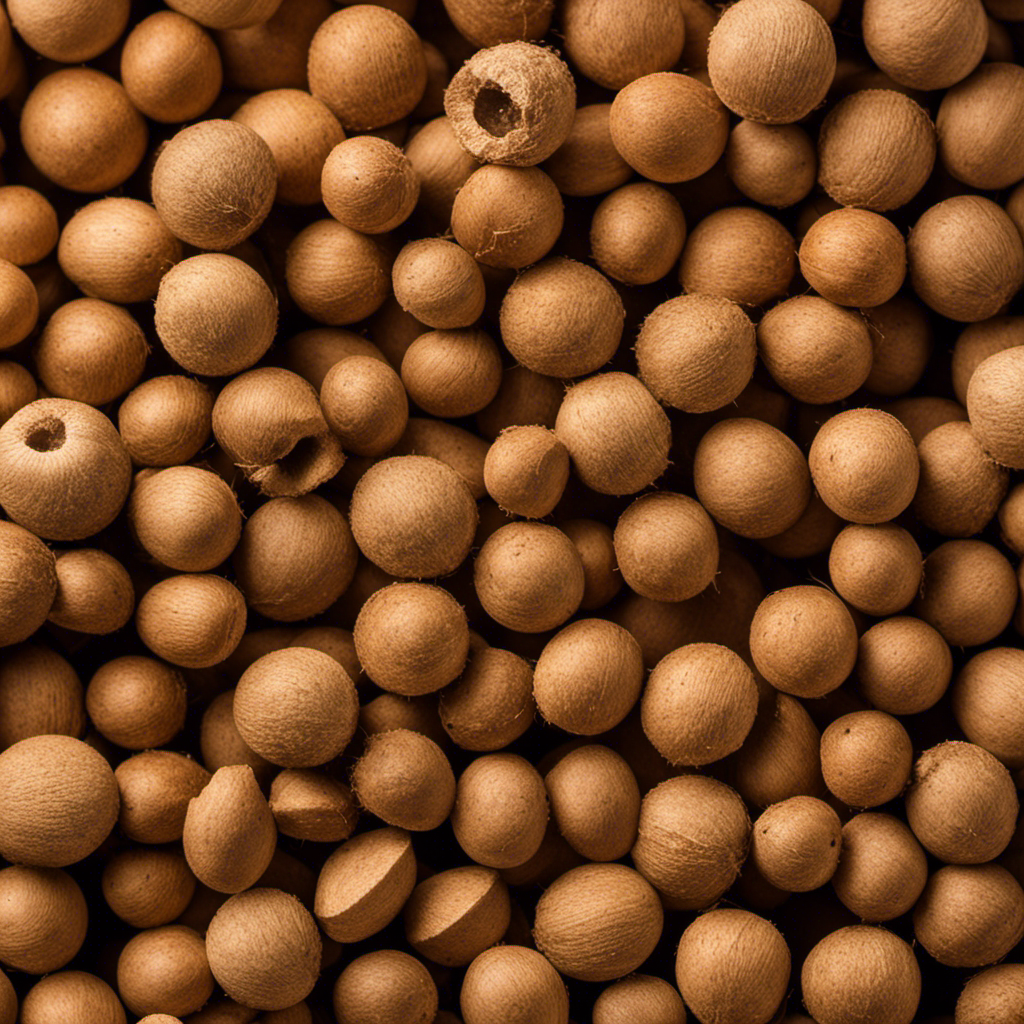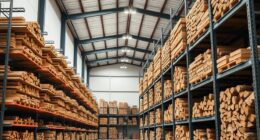Ever curious about the best way to guarantee your wood for pellet manufacturing possesses the ideal level of moisture? Worry no more, I have the solution you need.
In this article, I’ll guide you through the process of checking wood moisture levels before turning it into pellets. We’ll discuss the importance of moisture testing, the tools needed, and a step-by-step guide to get accurate readings.
By the end, you’ll be equipped with the knowledge to maintain optimal wood moisture levels for top-quality pellets.
Key Takeaways
- Wood moisture levels affect combustibility and energy efficiency of pellets
- Accurate moisture measurement ensures optimal pellet production
- Common mistakes in wood moisture testing should be avoided for accurate readings
- Ideal moisture content for wood pellets is 8% to 12%
Importance of Checking Wood Moisture Levels
You’ll want to make sure you’re aware of the importance of checking the moisture levels in the wood before turning it into a pellet. Wood moisture measurement techniques play a crucial role in determining the quality of the final pellet product.
The moisture content of wood affects its combustibility and energy efficiency. If the wood is too wet, it will not burn efficiently and may produce excess smoke and pollutants. On the other hand, if the wood is too dry, it may not produce enough heat.
By accurately measuring the moisture levels, you can ensure that the wood is within the optimal range for pellet production. This will result in higher quality pellets with better combustion properties.
Now, let’s move on to the tools and equipment needed for moisture testing.
Tools and Equipment Needed for Moisture Testing
To accurately determine the moisture content of the wood, you’ll need specific tools and equipment. Here are the essential items you’ll need for moisture testing:
-
Moisture meter: This handheld device measures the moisture content of the wood by penetrating the surface and providing a reading on a digital display. There are different types of moisture meters available, including pin-type and pinless meters.
-
Calibration block: This is used to calibrate the moisture meter and ensure accurate readings. It is a piece of wood with a known moisture content that is used as a reference point for calibration.
-
Probe pins: These are used with pin-type moisture meters to penetrate the wood and obtain moisture readings. They come in different lengths to accommodate different wood thicknesses.
-
Protective case: It is important to store and transport your moisture meter and accessories in a protective case to prevent damage and ensure longevity.
With these tools and equipment, you can perform accurate moisture testing and obtain reliable readings. Now, let’s move on to the step-by-step guide to checking wood moisture without further ado.
Step-by-Step Guide to Checking Wood Moisture
First, make sure you have all the necessary tools and equipment for checking the moisture content of the wood. Wood moisture measurement techniques are crucial in ensuring the quality of pellets produced. Common mistakes in wood moisture testing can lead to inaccurate readings and affect the overall efficiency of the pellet production process. To avoid these mistakes, follow these steps:
- Select a reliable moisture meter specifically designed for wood moisture measurement.
- Calibrate the meter according to the manufacturer’s instructions.
- Take multiple readings at different locations on the wood surface to ensure accuracy.
Table: Common Mistakes in Wood Moisture Testing
| Mistake | Explanation | Solution |
|---|---|---|
| Using an incorrect moisture meter | Different wood species require different moisture meters. | Use a moisture meter suitable for the specific wood species. |
| Not calibrating the meter | Uncalibrated meters can give inaccurate readings. | Calibrate the meter regularly as per the manufacturer’s instructions. |
| Taking readings from a single spot | Moisture content can vary within the wood. | Take multiple readings from different spots for an accurate average. |
Interpreting Moisture Readings for Pellet Production
By accurately interpreting the readings, you can determine the ideal moisture content for pellet production. The moisture content of the wood plays a crucial role in the quality of the wood pellets produced.
Here are the key factors to consider when interpreting moisture readings for wood pellet production:
-
Moisture Meter Accuracy: Ensure that the moisture meter you use is calibrated and accurate to obtain reliable readings.
-
Acceptable Moisture Range: The ideal moisture content for wood pellets is typically between 8% and 12%. Anything below or above this range can affect the quality of the pellets.
-
Pellet Durability: Higher moisture content can lead to weak and brittle pellets that easily crumble. On the other hand, excessively dry wood can result in pellets that are too hard and prone to cracking.
-
Storage Considerations: Properly storing the wood pellets is essential to maintain their moisture content and prevent any moisture absorption or loss.
Understanding and interpreting moisture readings accurately is vital for ensuring the production of high-quality wood pellets. Now, let’s explore some tips and tricks for maintaining optimal wood moisture levels.
Tips and Tricks for Maintaining Optimal Wood Moisture Levels
One way to ensure optimal wood moisture levels is by using a moisture meter with high accuracy. Measuring wood moisture is crucial in preventing wood moisture damage, such as warping, cracking, and decay. By regularly monitoring the moisture content of wood, you can prevent these issues and ensure the quality of your wood products.
To effectively measure wood moisture, it is important to understand the moisture content and its ideal range for different applications. The table below provides a general guideline for wood moisture levels:
| Wood Type | Ideal Moisture Content Range |
|---|---|
| Softwood | 12% – 15% |
| Hardwood | 6% – 9% |
| Plywood | 6% – 9% |
What is the importance of checking the moisture content of wood before making it into a pellet?
Before making a wood pellet, it’s crucial to check the moisture content of the wood. High moisture can lead to inefficient burning and low heat output. The wood pellet selection guide suggests ensuring the moisture content is between 10-12% to produce high-quality pellets for heating or cooking purposes.
What is the Importance of Checking the Moisture of Wood Before Making into Pellets?
Before making wood pellets, it’s crucial to check the moisture content of the wood. High moisture can lead to mold and poor combustion. To ensure high-quality pellets, use a moisture meter to measure the wood’s moisture levels. This step is crucial for understanding how to choose wood pellets for optimal performance.
Frequently Asked Questions
Can I Use Any Type of Wood for Making Pellets, or Is There a Specific Type That Works Best?
I can use any type of wood for making pellets, but there are specific types that work best. Factors affecting the moisture of wood for pellet making include species, age, and drying method.
How Long Does It Take for Wood to Reach Optimal Moisture Levels for Pellet Production?
To reach optimal moisture levels for wood pellet production, factors such as wood species, storage conditions, and drying methods must be considered. It is crucial to monitor moisture content to ensure high-quality pellets.
Are There Any Alternative Methods for Checking Wood Moisture Levels Besides Using a Moisture Meter?
There are alternative methods for measuring wood moisture levels, such as visual inspection and oven drying. However, these methods may not be as accurate as using a moisture meter, which provides precise and reliable readings.
What Are the Consequences of Using Wood With High Moisture Levels for Pellet Production?
Using wood with high moisture levels for pellet production can have severe consequences. The moisture content impacts pellet quality, causing problems like uneven combustion, reduced energy output, increased emissions, and potential damage to the pelletizing equipment.
Can Wood With Low Moisture Levels Still Be Used for Making Pellets, or Is a Certain Level of Moisture Required for the Process?
Using low moisture wood for pellet production can negatively impact the quality of the pellets. It is important to maintain a certain level of moisture in the wood to ensure optimal pellet production.
Conclusion
In conclusion, my fellow wood enthusiasts, checking the moisture levels of our beloved timber before turning it into pellets is of utmost importance. Armed with the right tools and equipment, we can ensure the perfect moisture content for optimal pellet production.
By following the step-by-step guide and interpreting moisture readings like seasoned pros, we can avoid any wood-related blunders. Remember, maintaining the ideal moisture levels is the key to pellet success.
So let’s embark on this moisture-testing journey together, my moisture-conscious comrades!












